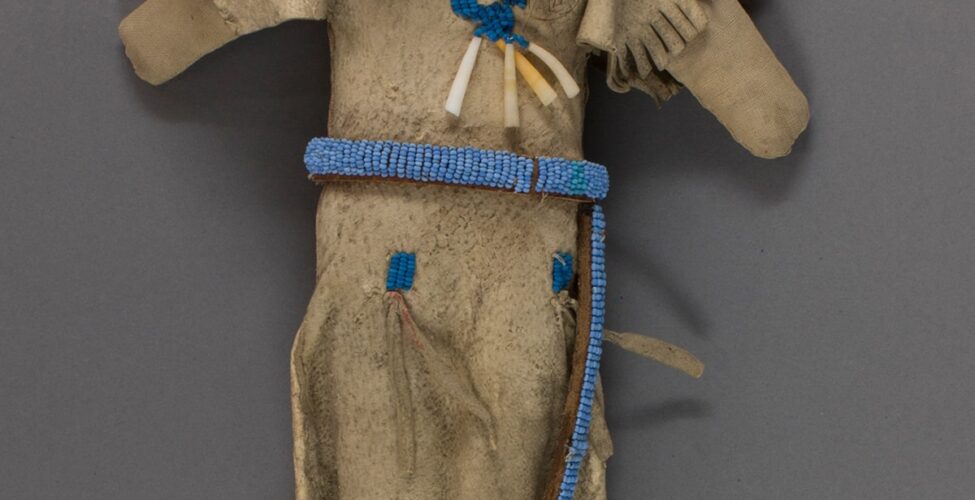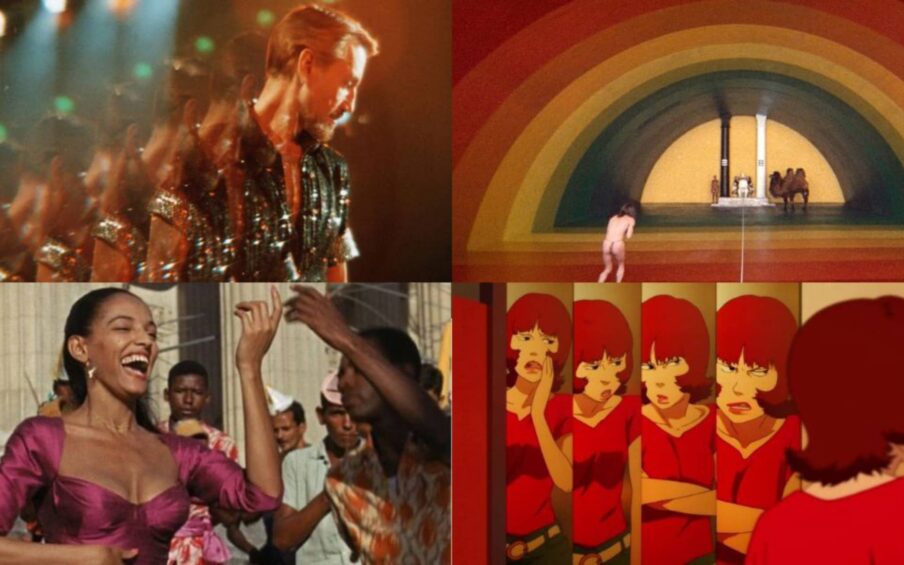With the school year beginning, I began to think about children and how objects such as dolls are so universal. This Nez Perce doll was surely made for children in the image of women in her community. The clothing is composed of the same materials her relatives wore: soft hide for the dress, leggings, and moccasins, all sparingly embellished with blue and yellow trade beads. She also wears a tiny blue necklace with little shell ornaments. The doll’s hair is styled into two pigtails and her face is represented with beads for the eyes, nose, and mouth. She must have been well-loved; the dirty surface of a beloved stuffed animal, doll, or blanket, is familiar evidence of a child’s favorite toy. While some Native American artists today, such as Rhonda Holy Bear (Cheyenne River Sioux) create spectacular beaded dolls with incredible details for us to admire, such as her “Lakota Honor-Sees the Horses Woman,” which won Best of Show in the 99th Annual Santa Fe Indian Market this year, this one was made to live in the hands of a lucky child over a century ago.
—Kathleen Ash-Milby, Curator of Native American Art
Nez Perce artist, Doll, ca. 1880. Hide, beads, cloth, and hair. The Elizabeth Cole Butler Collection, 2012.67.29



